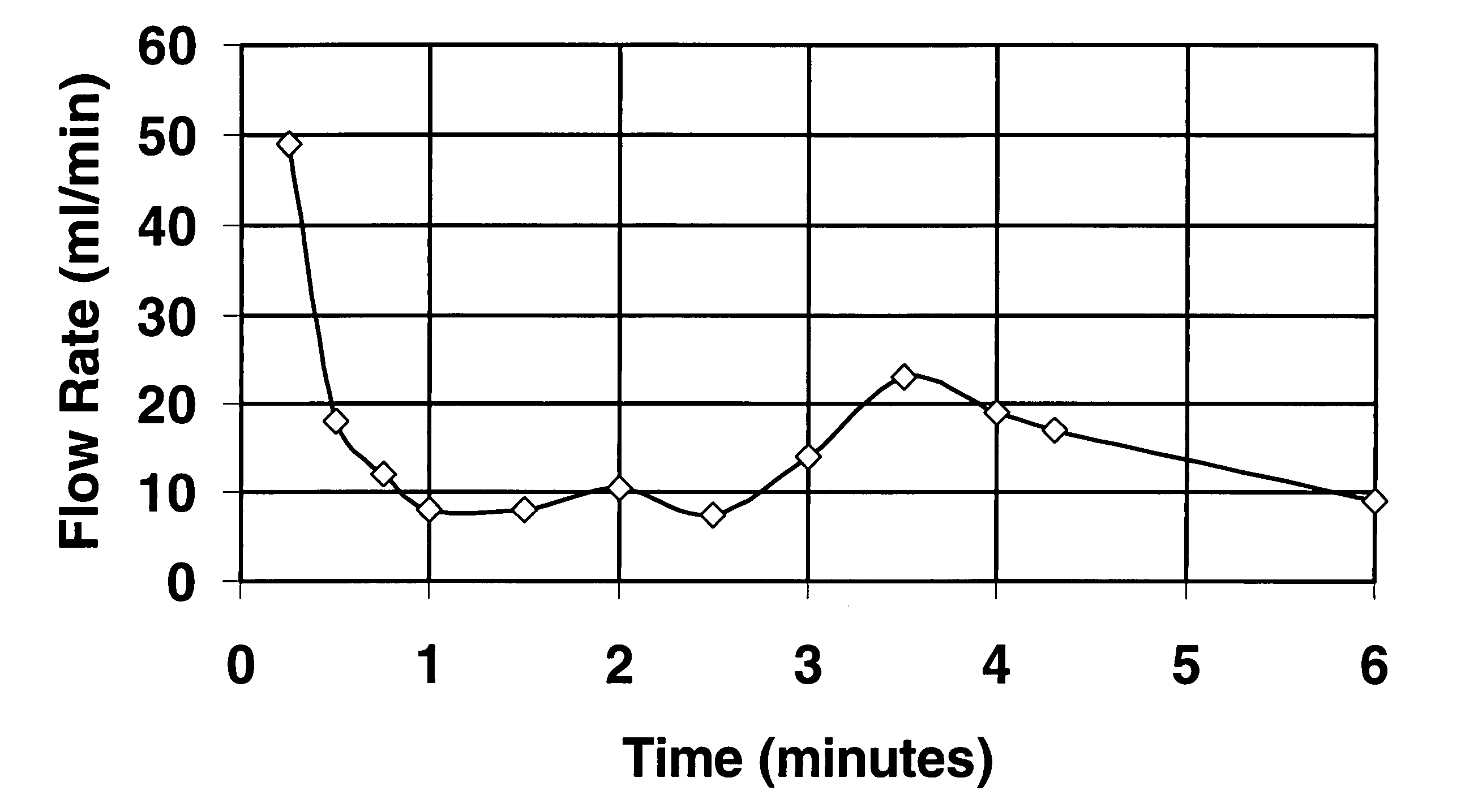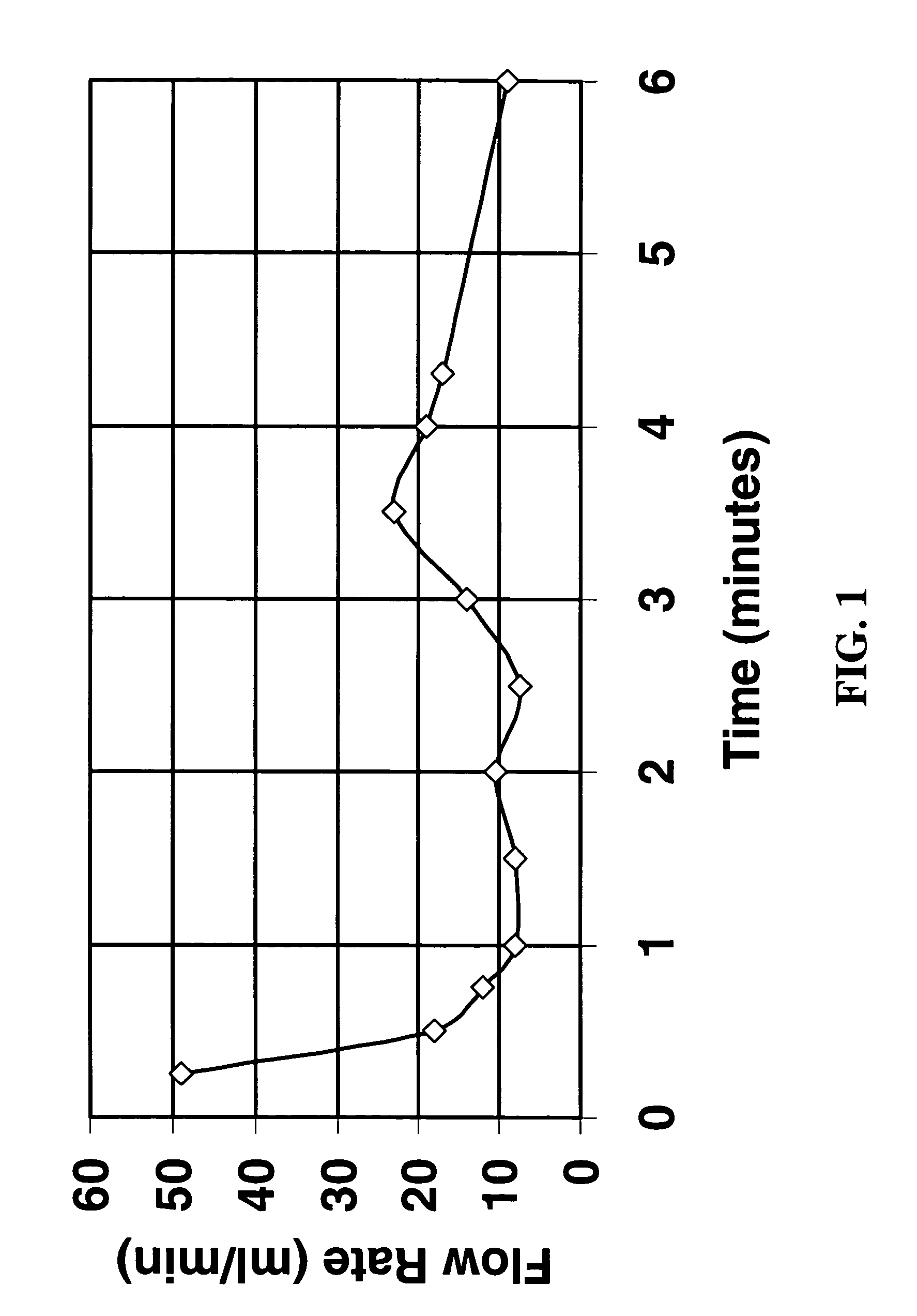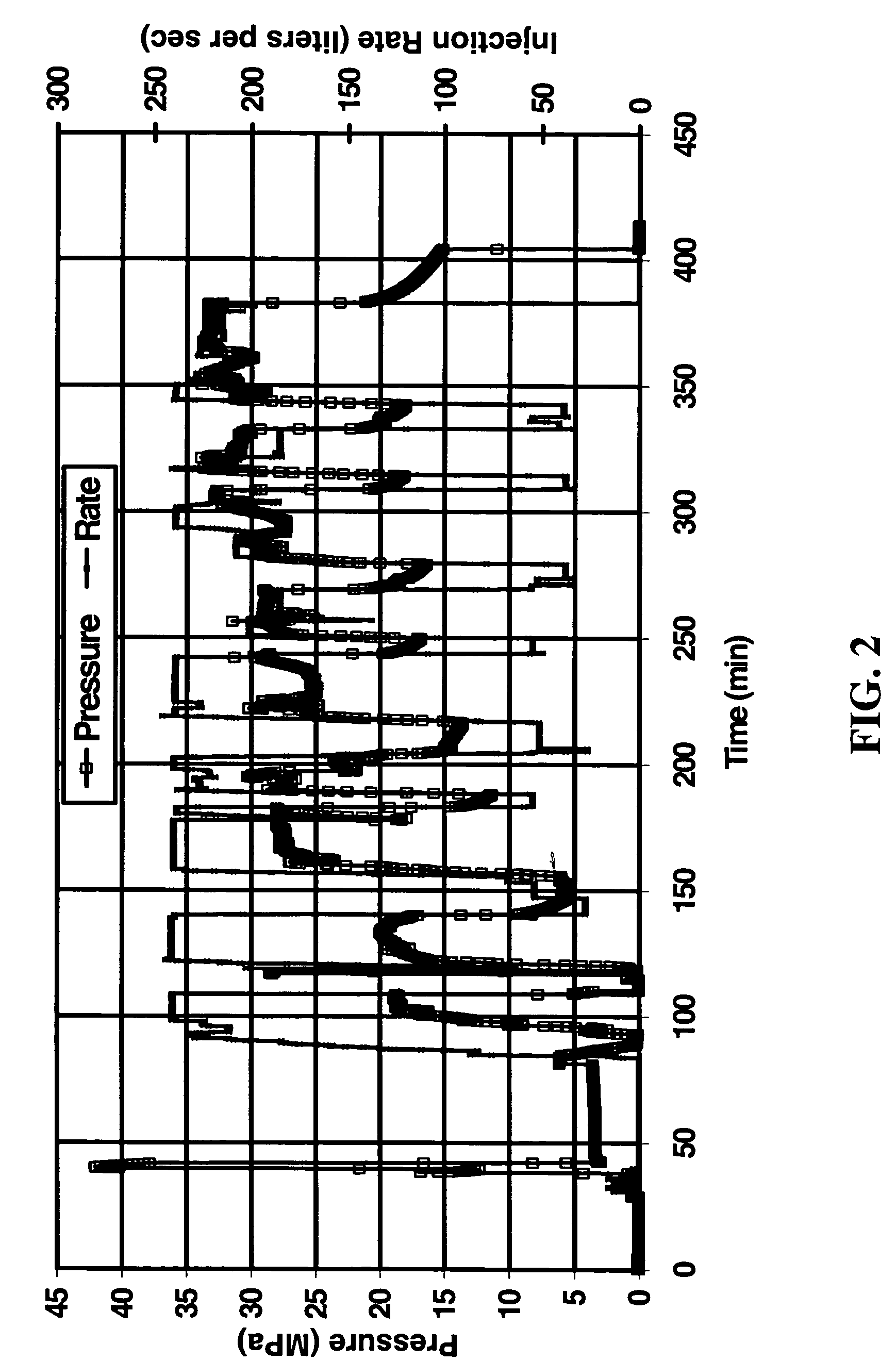Methods for controlling fluid loss
a technology of fluid loss and control method, applied in the direction of folding cabinets, borehole/well accessories, cabinets, etc., can solve the problem that the use of fibers alone is not as effective in diversion, and achieve the effect of enhancing the placement and effectiveness of fluids and broader applicability
- Summary
- Abstract
- Description
- Claims
- Application Information
AI Technical Summary
Benefits of technology
Problems solved by technology
Method used
Image
Examples
example 1
[0051]A hydraulic fracturing treatment was performed in a sandstone formation at about 129° C. (about 265° F.) using slickwater (water plus a polyacrylamide friction reducer). The treatment was pumped at 7.95 m3 / min (50 barrels / min (bpm)) and was intended to include proppant stages containing from 0.12 kg / L of fluid (1 PPA (pounds proppant added per gallon of fluid)) to 0.60 kg / L of fluid (5 PPA) of 0.43 to 0.84 mm (20 / 40 U.S. mesh) Ottawa Sand. At the start of the 0.30 kg / L (2.5 PPA) proppant stage, 6 mm long PET fibers at a concentration of about 8.6 g / L (about 71 lb / 1,000 gal) were added. A rapid increase in treating pressure and a near-wellbore screenout occurred forcing job shutdown as the stage entered the formation several minutes later due to fiber / slurry bridging in the narrow fracture (less than about 0.25 cm (about 0.1 inches) in width) near the wellbore.
example 2
[0052]A laboratory test was performed with 15% VDA (15% HCl containing 6% by volume of a concentrate containing about 40% erucic amidopropyl dimethyl betaine in isopropanol and water) containing 8.4 g / L (70 ppt) of 6 mm long PLA fibers at 93.3° C. (200° F.). The mixture of in situ gelled acid (VDA) plus fibers was injected through a 0.3 cm (0.12 inch) wide by 2.54 cm (1 inch) high by 15.2 cm (6 inch) long fracture created between two halves of an Indiana Limestone core. The fluid was injected at a constant differential pressure of 0.17 MPa (25 psi) across the length of the fracture and the flow rate was monitored as a function of time as shown in FIG. 1. The flow rate was initially about 50 ml / min and decreased to about 8 ml / min within a minute of injection of VDA plus fibers. Hence, the rate of fluid loss decreased by a factor of about 6 as a result of using VDA plus fibers. The experiment shows that this fluid containing fibers and VDA was self-diverting when injected into this fr...
example 3
[0053]An acid fracturing treatment was performed in a naturally fractured carbonate formation. The treatment pumping schedule is shown in Table 1; the main treatment fluid was slickwater pumped at 12.7 m3 / min (80 barrels / min). Various other small stages of 15% HCl, 15% VDA diverter, slickwater containing mutual solvent, and slickwater spacer, were pumped at about 3.2 m3 / min (20 barrels / min). The slickwater contained about 0.1 vol percent of a friction reducing polymer; 15% VDA means 15% HCl containing 6% by volume of a concentrate containing about 40% erucic amidopropyl dimethyl betaine in isopropanol and water; the slickwater with mutual solvent contained about 10% ethylene glycol monobutyl ether. The HCl and VDA stages contained corrosion inhibitor. Fibers were added the first three times at a concentration of 12 g / L (100 pounds / 1000 gallons) and the last two times at 18 g / L (150 pounds / 1000 gallons) in five of the stages, including three diversion stages (Table 1). The fibers wer...
PUM
 Login to View More
Login to View More Abstract
Description
Claims
Application Information
 Login to View More
Login to View More - R&D
- Intellectual Property
- Life Sciences
- Materials
- Tech Scout
- Unparalleled Data Quality
- Higher Quality Content
- 60% Fewer Hallucinations
Browse by: Latest US Patents, China's latest patents, Technical Efficacy Thesaurus, Application Domain, Technology Topic, Popular Technical Reports.
© 2025 PatSnap. All rights reserved.Legal|Privacy policy|Modern Slavery Act Transparency Statement|Sitemap|About US| Contact US: help@patsnap.com



